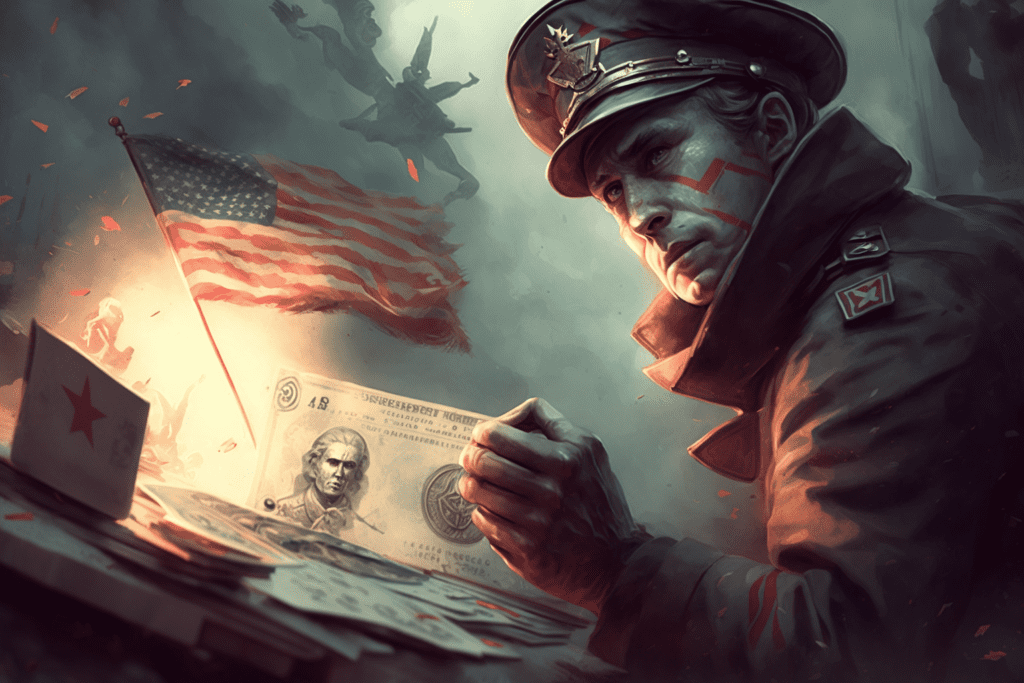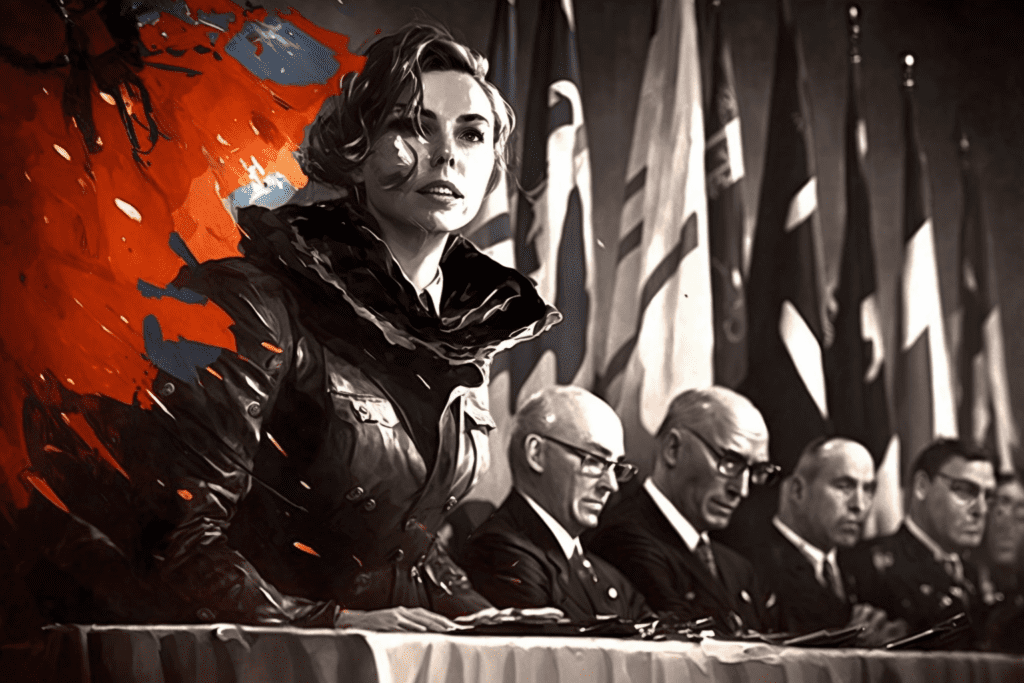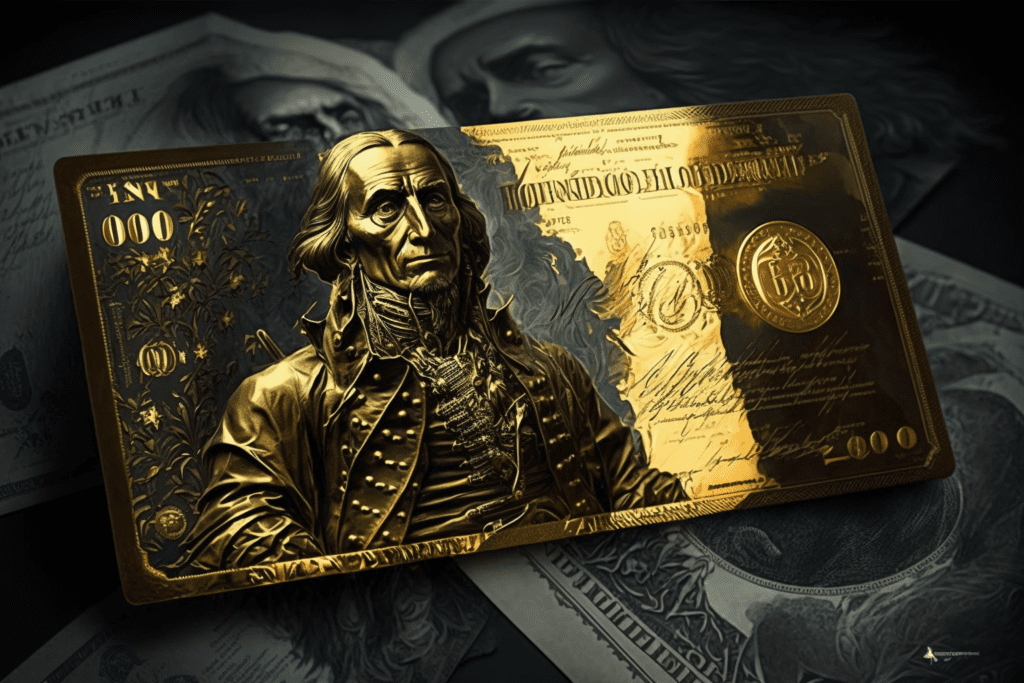
After World War II, the global economy was in shambles, with Europe and Asia left in ruins, and widespread economic instability was rampant. Inflation, currency instability, and trade barriers plagued the world economy, which was a common theme after all wars. The United States, however, emerged from the war as the largest economy and a major creditor nation, with American soil spared except for the bombing of Pearl Harbour. These factors gave the United States a significant advantage during the negotiations that led to the Bretton Woods system.1
During the Bretton Woods conference in 1944, the US dollar was already the dominant international currency, thanks to its widespread use in trade and finance. In addition, the United States had amassed large gold reserves (approximately 71% of non-Soviet gold) during the war, which gave it further bargaining power during the negotiations.1
Bretton Woods and US Dominance

The Bretton Woods conference was organized to establish an economic system after World War II that could provide stability and predictability for international trade and investment. The goal was to create a system that would allow for smooth international trade without the physical constraints of gold.2
Two options were presented during the negotiations: creating a world currency based on a basket of currencies from different countries, or using the US dollar as the global reserve currency.2
The UK was the only real competitor to the US at the time and had been bailed out by the US through the lend-lease policy during the war. When setting up Bretton Woods Institutions such as the IMF and World Bank, the US held >20% voting power, and any agreement had to reach at least 80% to be approved, giving the US overruling power. The UK held 20% voting power but was unlikely to challenge the country that had just bailed them out.3
With the US having the upper hand, the US dollar was selected as the global reserve currency. But what does it mean to be a global reserve currency?
Key features of the Bretton Woods system

Essentially, countries entrusted the US with their gold in return for US dollars. Here’s a rough overview of how this system worked:
- Countries pegged their currencies’ exchange rates to the US dollar.
- The US dollar was pegged to gold at a rate of $35 per ounce.
- Countries would give their gold to the US for US dollars at this exchange rate.
So, in effect, all currencies were pegged to gold through the US dollar. During this time, the US dollar was considered “as good as gold.” Instead of settling international debt in cumbersome gold, it was agreed that debt would be settled in US dollars between countries. If any country wanted to reclaim its gold, it would give the US its paper IOUs (US dollars) in exchange for gold.4
This system meant that all currencies had a fixed exchange rate for the US dollar, which had a fixed exchange rate for gold. Essentially, this meant that all currencies were fixed to gold. It also meant that exchange rates between currencies were fixed and stable, allowing for greater predictability and confidence in international trade.4
Most countries were satisfied with this arrangement. Since the US held the majority of the world’s gold at the time, there was little risk of the US defaulting on its gold obligations. However, as with the Genoa Conference after WWI, there was an added layer of risk. Instead of this risk being spread amongst several countries it was now centralised in one country, the US.1
For a time, it was good…
…until it wasn’t
References
- Gladstein, A. The Hidden Costs of the Petrodollar. Bitcoin Magazine. Available at: https://bitcoinmagazine.com/culture/the-hidden-costs-of-the-petrodollar
- Bretton Woods system. Wikipedia. Available at: https://en.wikipedia.org/wiki/Bretton_Woods_system.
- Leech, D. and Leech, R. “Voting Power in the Bretton Woods Institutions”, Warwick University and Birkbeck, London University.
- Investopedia. “Bretton Woods Agreement Definition.” Available at: https://www.investopedia.com/terms/b/brettonwoodsagreement.asp
These articles were designed to make these concepts more palatable. If you’re interested in reading a more in-depth perspective on the transition to fiat currency, consider the following:
ENDEVR. “End of the Road: How Money Became Worthless.” Youtube documentary, https://www.youtube.com/watch?v=NJd6RKsY5H4
Saifedean Ammous, “The Bitcoin Standard: A Decentralised Alternative to Central Banking”. Wiley, 2018
Saifedean Ammous, “The Fiat Standard: The Debt Slavey Alternative to Human Civilization”. Wiley, 2021
Investopedia. “How Petrodollars effect the US dollar.” https://www.investopedia.com/articles/forex/072915/how-petrodollars-affect-us-dollar.asp
Gladstein, Alex. “Uncovering the hidden costs of the Petrodollar.” Bitcoin Magazine, https://bitcoinmagazine.com/culture/the-hidden-costs-of-the-petrodollar

Ruki is a passionate Bitcoin educator who firmly believes in the principles of the Austrian School of Economics. As a sound money advocate he recognises its benefits to individuals and society as a whole. He is dedicated to empowering those without financial access to take control and build a more secure future.
